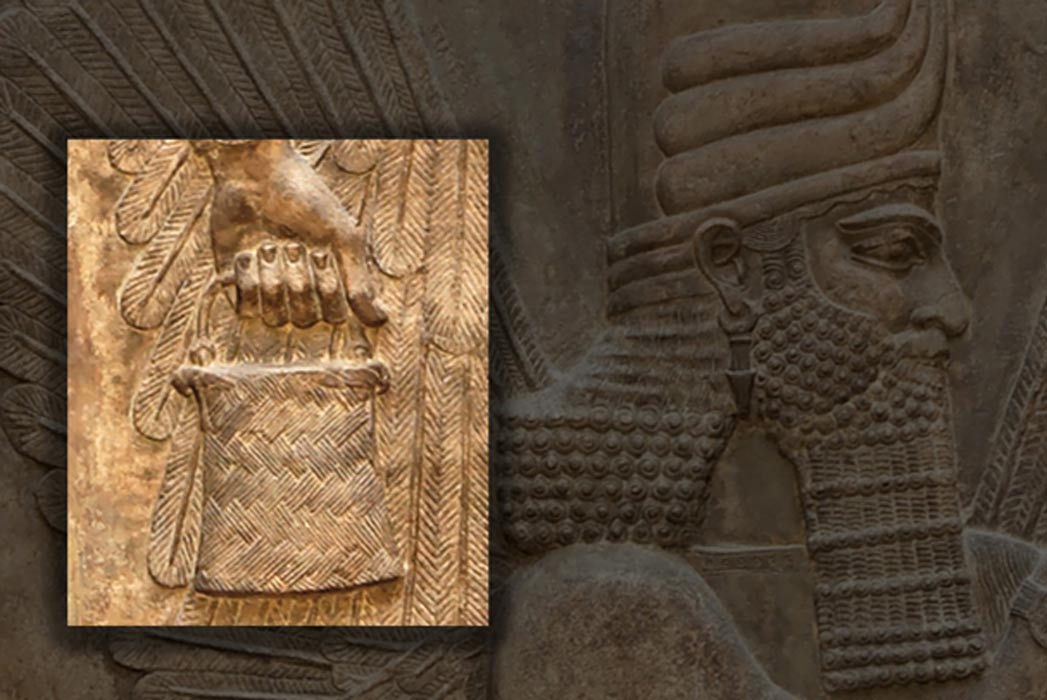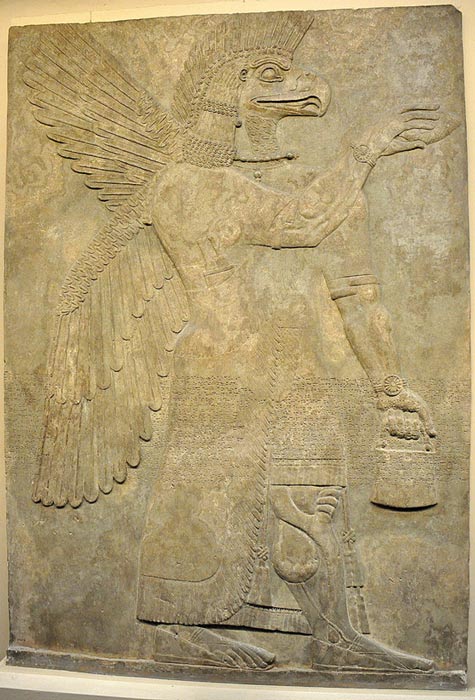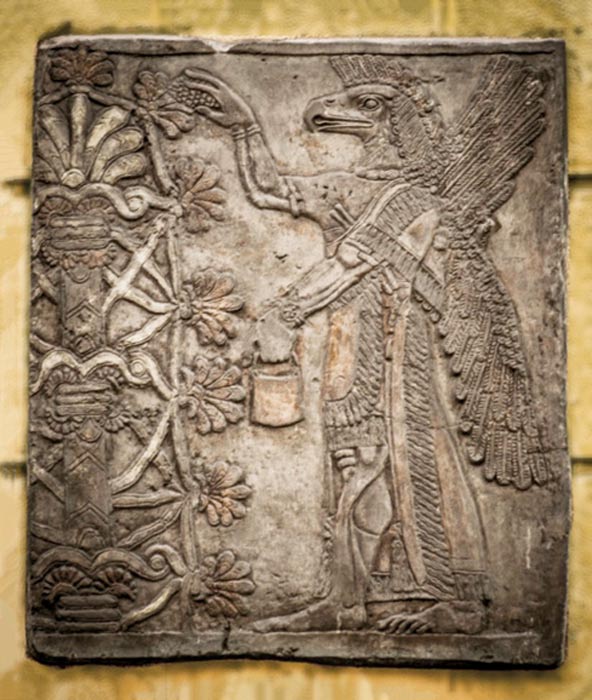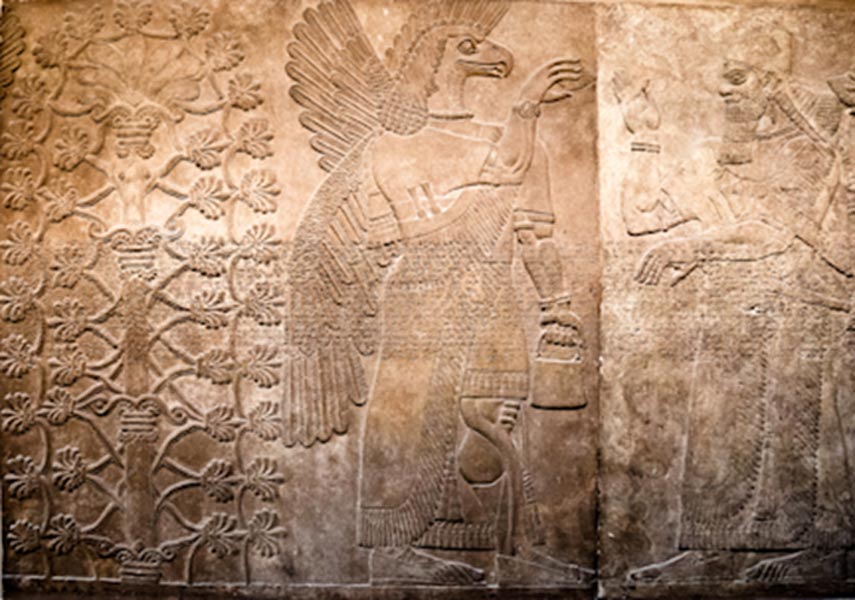
Banduddu: Solving the Mystery of the Babylonian Container
One of the great riddles in Mesopotamian sacred art concerns the image of anthropomorphic winged figures called Apkallu holding a mullilu (tree fruit) in one hand, and a banduddû — a container — in the other. The purpose of this container is rightly mysterious. It appears throughout Sumer and Babylon, and half a world away in Yucatan; six thousand years earlier, it was carved in relief upon Pillar 43 at Gobekli Tepe, one of the world's oldest standing stone enclosures. But what exactly was the purpose of this container? A look at cross-cultural symbolism in the images provides an answer.
The Apkallu

Wall relief depicting an eagle-headed and winged man, Apkallu, from Nimrud. (CC BY-SA 4.0)
The Apkallu are a group of seven sages, emissaries and mediating figures entrusted by a creator god to bring the civilizing arts to humanity following a catastrophic flood. Their story is repeated almost verbatim in diluvial myths of many ancient cultures, the only changeable aspect being their names. The quintessential image of the Apkallu is that of two eagle-, or perhaps falcon-headed people standing either side of a flowering tree, picking its fruit, and the manner in which they hold the container suggests the fruit are to be placed in said receptacle. Sometimes the figure of the supreme deity Ahura Mazda is depicted inside a winged disc above the axis of the tree, implying it is close to God, and thus, wisdom. This culturally shared image is known as the World Tree or Tree of Knowledge, and served as both focal point and foundation of all Mysteries teachings and traditions.

Sent by the creator god Ea, Apkallu function as cleansers, protectors, lawgivers and advisors. Here one administers to the Tree of Knowledge.
The iconic container appears throughout many carved panels and clay tablets found in the palace of Nimrud and its surrounding region. To solve the riddle, it is important to see the images together, because, placed in context, they appear to form a kind of triptych conveying a running commentary. Such a series of panels, removed from one of the rooms at Nimrud, is housed in the British Museum.
- Ritual Chambers of the Andes: Used in Secret, Near Death Simulations
- Göbekli Tepe Shamans and their Cosmic Symbols – Part I
- Excavations reveal Gobekli Tepe had oldest known sculptural workshop
One panel shows two Apkallu administering to the sacred tree; in the next, an Apkallu has turned from the tree and bestows a king with the tree fruit, all the while holding that mysterious container. Clearly the king is conferred some special privilege.

The featured king is identified as Ashunarsipal, who was also a priest, a high initiate of the temple, and thus privy to secret knowledge that only such a position could allow. We know he held this position because in a separate frieze he is depicted holding a beehive above his head, a clear indication he has been initiated into the secrets of the beehive. We shall return to this thought later because it is central to understanding the purpose of the container.




